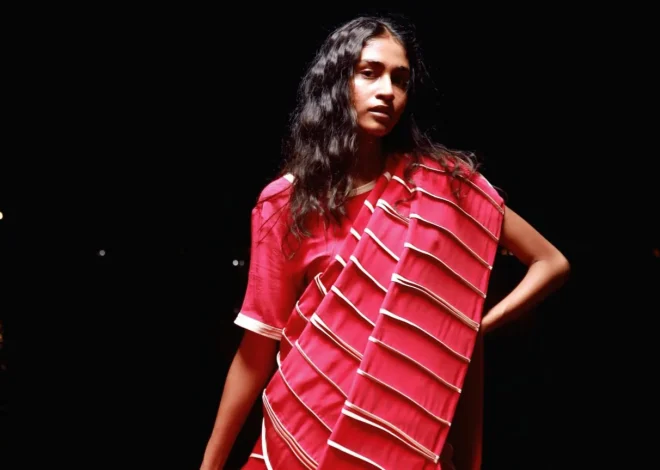
How Fashion Shapes the World: Evolution, Innovation, and Personal Expression in the 21st Century

Fashion plays a crucial role in shaping the world in the 21st century, influencing not only the way people dress but also trends in interior design, makeup, and attitudes. The impact of fashion is broader than ever, affecting global culture and personal identities.
The Evolution of Fashion in the 21st Century
Embracing Diversity and Inclusivity
Fashion has moved beyond traditional boundaries, celebrating diversity and promoting inclusivity. Designers now embrace beauty in all forms, creating collections that resonate with people across the globe. This shift has made fashion a powerful tool for social change. More brands are featuring models of various ethnicities, ages, and body types, reflecting the diversity of their audience.
The rise of movements such as body positivity and gender inclusivity has pushed the fashion industry toward greater representation. Designers and brands are moving away from narrow beauty standards and now embrace a broader definition of beauty. This change impacts not just clothing but also makeup and accessories, ensuring that all individuals feel represented and celebrated.
Sustainable Fashion: A Paradigm Shift
A significant transformation in recent years has been the focus on sustainability. Fashion is no longer solely about appearance but also about ethical choices. From eco-friendly fabrics to ethical manufacturing practices, the industry is adopting more sustainable practices, prioritizing the planet and its people. Consumers are becoming more aware of the environmental impact of their purchases, leading to a rising demand for sustainable fashion.
Brands are focusing on reducing waste, using recycled materials, and ensuring fair labor practices. The concept of ‘slow fashion’ is gaining traction, encouraging consumers to buy less but select better quality and longer-lasting products. This shift towards sustainability is not merely a trend but an essential evolution for the industry, aiming to reduce its carbon footprint and promote more responsible fashion consumption.
Social Media’s Influence on Fashion
The rise of social media has democratized fashion in unprecedented ways. People across the globe are now active participants, influencing and being influenced by the latest trends. Platforms like Instagram, Pinterest, and TikTok have become virtual runways, enabling individuals to showcase their unique styles and inspire others. Fashion influencers and bloggers hold significant power, often setting trends and guiding their followers’ fashion choices.
Social media has also allowed brands to connect directly with consumers, offering real-time feedback and building stronger relationships. This direct interaction has made the fashion industry more transparent and accessible. Brands can now launch new collections, host virtual fashion shows, and engage with their audience in real-time, making fashion more interactive than ever.
The Power of Fashion as a Form of Expression
Fashion as Identity
Fashion has evolved into a powerful form of self-expression. It allows individuals to convey their beliefs, affiliations, and moods. The clothes people wear tell a story and make a profound statement about who they are and what they stand for. Fashion can represent cultural heritage, personal values, or social status, making it a crucial part of one’s identity.
In modern society, fashion is used to express individuality and creativity. Streetwear, haute couture, and everything in between offer endless possibilities for personal expression. The rise of customization and DIY fashion further empowers individuals to create unique pieces that reflect their personal style.
Breaking Gender Norms
The fashion industry is challenging traditional gender norms by embracing fluidity and inclusivity. Unisex and gender-neutral fashion lines are becoming increasingly popular, promoting the idea that clothing should not be defined by gender. This shift reflects a society that values individuality and inclusivity. Designers are creating collections that cater to all genders, breaking down the binary distinctions that have traditionally defined fashion.
Celebrities and influencers have also played a pivotal role in breaking gender norms. Icons like Harry Styles, Billy Porter, and Jaden Smith are known for their gender-fluid fashion choices, inspiring millions to embrace a more inclusive and open-minded approach to clothing. This cultural shift is not only changing how we view fashion but also how we understand gender and identity.
The Future of Fashion: Technology and Innovation
Tech-Infused Fashion
Fashion and technology have become inseparable. From smart fabrics that adapt to environmental conditions to wearable tech, the industry is at the forefront of innovation. Fashion and technology are reshaping not only what we wear but also how we interact with clothing. Innovations like 3D printing, virtual fitting rooms, and AI-driven design tools are revolutionizing the industry.
Smart textiles embedded with sensors can monitor health metrics, regulate body temperature, or even change color. Wearable technology, such as smartwatches and fitness trackers, seamlessly integrates fashion with functionality. These advancements offer new opportunities for designers and brands to innovate and provide unique experiences for their customers.
Virtual Fashion Shows and Augmented Reality
Fashion shows are no longer limited to physical runways. Virtual fashion shows and augmented reality (AR) are becoming the norm, allowing audiences worldwide to experience the latest collections from their homes. This marks a new era in fashion accessibility and engagement. Designers can now reach a global audience, breaking down geographical barriers and making fashion more inclusive.
AR is also transforming the shopping experience. Consumers can use AR to try on clothes virtually, see how a piece of furniture looks in their home, or even receive personalized styling advice. This technology enhances the shopping experience, making it more interactive and personalized.
Conclusion: Fashion’s Unyielding Influence
As we navigate the complexities of the 21st century, fashion’s enduring influence remains clear. It is about embracing change, celebrating diversity, and making conscious choices. Fashion continues to shape our world, and its influence is showing no signs of waning. In a society that values self-expression, fashion remains a powerful force, truly ruling the world.
Fashion’s importance is undeniable, with entire magazines, TV shows, and constant discussions dedicated to it. Designers continue to market the value people place on fashion, and people continue to follow their every move. As long as this relationship endures, fashion will maintain its dominant position in society, influencing not just what we wear but how we think and act. Fashion truly rules the world.




